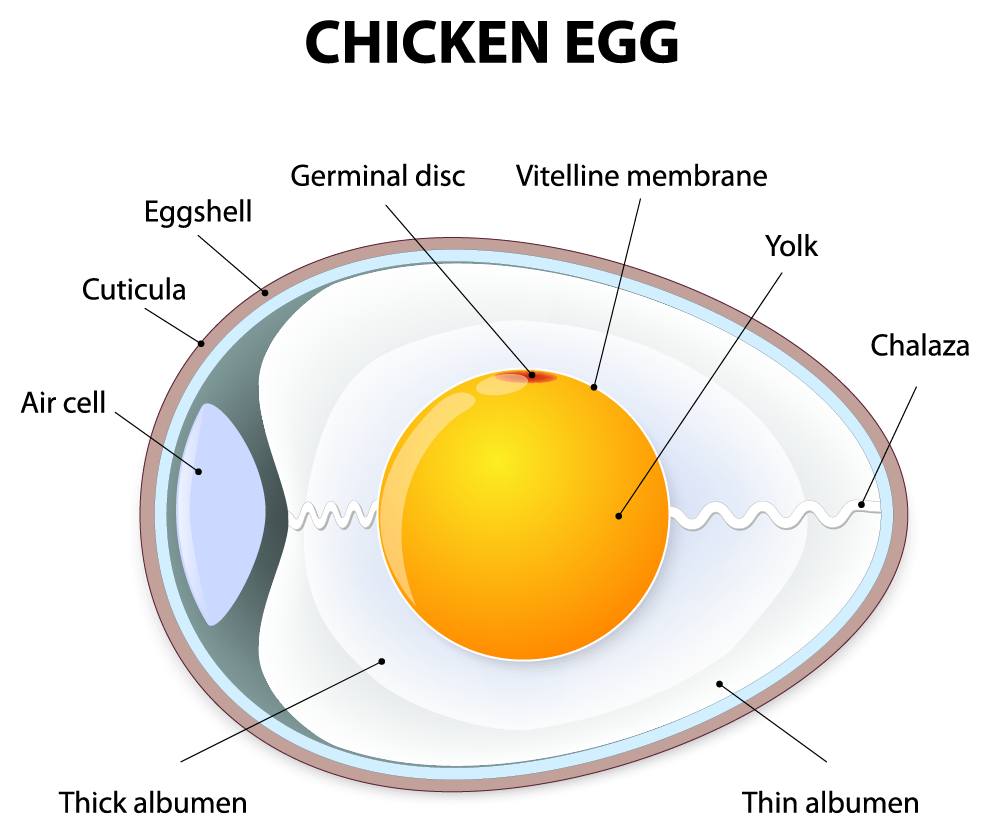Egg Structure – The Inside Out on the Egg’s Insides!
 The Egg Shell
The Egg Shell
The first thing you’ll notice is that the egg has a fat rounded end and a pointed cone end. The egg is laid rounded end first. Under the rounded end is the air sack that forms as the contents of the egg cool from the internal temperature of the bird.
The shell itself is slightly porous and allows air to pass through to the interior, whilst still providing protection for the contents from damage and bacteria.
Membranes
Under the shell are two thin membranes. The first is just under the shell and provides some additional support to the shell. The second surrounds the white of the egg and as the egg ages the two membranes separate. The fact there are two membranes and that they split as the egg ages is why fresh eggs are difficult to peel the shell from when boiled.
Yolk & Chalaza
To hold the yolk in a central position there is a connection of tissue from the membrane that surrounds the yolk to the top and bottom of the second membrane that is technically known as the chalaza. If you crack an egg then you may see a whitish string in the egg white, this is the chalaza.
Egg White (albumen)
Next we have the egg white itself or albumen. In a hen’s egg approximately 60% is white and 40% yolk. In a duck egg, there tends to be more yolk in ratio to white.
The white provides cushioning and additional nutrition for the developing chick and contains less nutrition than the yolk.
Germinal Disc
There’s another membrane surrounding the yolk and then the yolk itself. On the yolk you may see a little white spot, this is the germinal disc which contains the cells that will develop into a chick if the egg is fertile.
Further Articles All About Eggs
- Araucana Egg Shell Colour & Genetics
- Build Your Own Artificial Lighting System for Winter Egg Production
- Changing Egg Yolk Colour with Feeding
- Double Yolk Eggs – What Causes Double Yolk Eggs?
- Egg Shell Colour Chart by Breed of Hen
- Egg Structure – The Structure of an Egg
- Eggs from Different Species
- Know Your Eggs? – Egg Descriptions Explained
- Marketing Your Surplus Eggs – How to Sell Your Eggs
- Nutritional Value of Eggs – Are Free Range Eggs Better for You?
- Pale Eggs – Egg Shell Colour
- Problems With Eggs – Yolks & Whites
- Saving Money – Economics of Home Produced Eggs
- Selling Your Surplus Eggs at Markets
- Selling Your Surplus Eggs from Home – Farm Gate Egg Sales
- Thin Eggshells – Causes & Cures
- What to do with Surplus Eggs? How to Store Eggs

